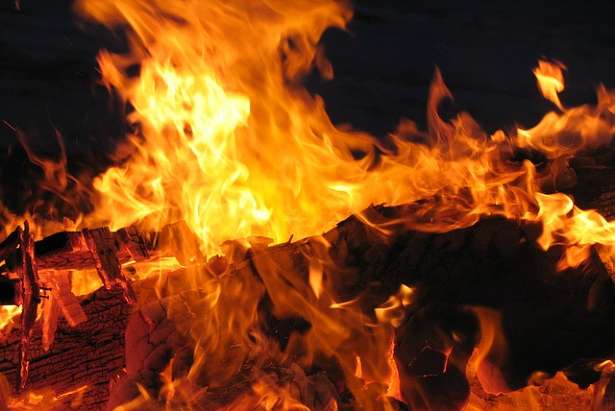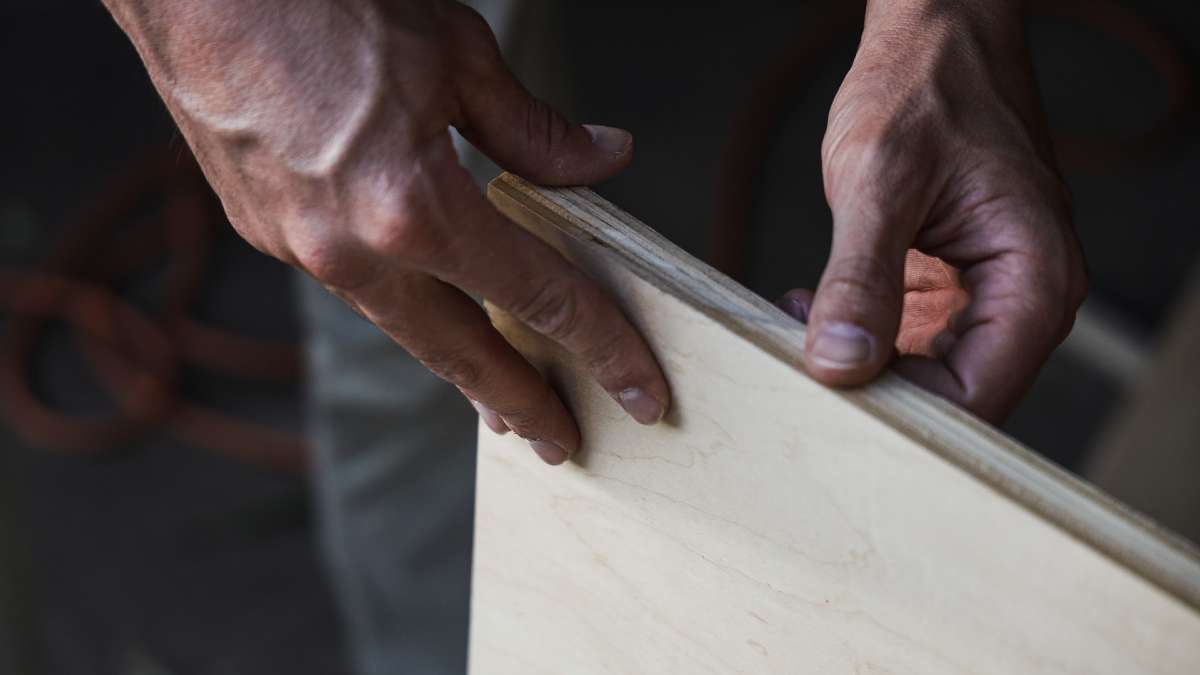Plywood is made from an engineered assembly of several layers of wood, glued together. This glue adhesive is probably one of the reasons why you can’t burn plywood.
One of the byproducts of burned adhesives is formaldehyde. Formaldehyde is used as a disinfectant, both at the industrial and residential levels. However, it’s most often known for its use as a preservative at mortuaries.
Tossing scrap chunks of plywood in the fire may not seem like a big deal. However, if you like the idea of formaldehyde filling up your house or backyard, then by all means. Seriously, there are many State and Local regulations against the open burning of materials, such as chemically treated wood.
Despite its morbid association with the dead, formaldehyde is a common enough ingredient in a host of things that we use every day, especially if you use antiperspirants and deodorants.
Formaldehyde’s Effect On The Body
Initially, exposure to formaldehyde via the lungs creates an irritant in the eyes, bronchial tubes, and throat areas. Not only is it highly toxic, but the fumes are also highly flammable. It has several side effects when inhaled:
- Headache
- Runny nose with sneezing
- Shortness of breath
- Irritation and burning in the lungs
- Bloodshot, watery eyes
- Loss of vision
- Allergic contact dermatitis
In the longer term, such as a few days, it can cause bronchitis, pneumonia, and pulmonary edema (water in the air sacs). All of the above-listed side effects are commonly more severe in children.
It’s A Fire Hazard Inside The Home
Besides the side effects, both long-term and short-term, from inhaling the smoke from burning plywood, there is also a fire hazard that stems from burning plywood in the fireplace.
It’s not an immediate thing, but if you have a habit of burning plywood often, you should know that any moisture (humidity) in the air will cause smoke to revert to a liquid form—or at least, some of the smoke.
When burning plywood, that smoke-turned-liquid in the fireplace becomes more of a resin that sticks to the interior walls of your chimney. This resin is highly flammable and if enough heat gets to it, regardless of how high up the chimney it is, there is the potential that it will ignite.
If you have a roaring fire going in the fireplace, you might not even notice that the entire inside of your chimney is on fire. It can get hot enough to weaken the mortar between the bricks, collapsing your chimney (which is full of screaming hot resin and flames) onto your home.
When you see burning buildings on TV—particularly if they are made of brick—the heat of the flames and the fuel that’s feeding it are responsible for the structural collapse, which can potentially occur in your fireplace.

What Other Byproducts Come From Burning Plywood?
The standard emissions from burning normal firewood are carbon monoxide, nitrogen oxide, carbon dioxide, and sulfur dioxide. None of these things are anything that you would want to inhale under normal circumstances, not to mention the additional byproducts of burning plywood.
When you burn plywood, you’re getting emissions of both carbon monoxide and formaldehyde, which could be lethal in an enclosed environment.
In a fireplace, the resins that we aforementioned may not ignite but that doesn’t mean that there isn’t still a danger from the other emissions because of the resin. Over time, the resin build-up can clog your chimney, allowing more and more harmful pollutants into your home.
Formaldehyde has a distinctive smell and is detectable as an undesirable odor by human beings and animals who have not grown used to the smell. Carbon monoxide, on the other hand, is completely tasteless and odorless.
Once inhaled, carbon monoxide will quickly replace much of the oxygen that your brain needs, not only to operate but to remain conscious. Without a sufficient supply of oxygen, you can fall unconscious. If you’re unconscious in your home and carbon monoxide is coming into the house through a blocked chimney, you are in danger of suffocating.
All Things Considered
Sure, most of the things on this list will probably never happen to you. However, there’s no reason to assume the extra risk by burning plywood, whether it’s outside the home or in your fireplace.
You never know what can happen and the safety of yourself, your family, and your pets is paramount. Avoid burning plywood if at all possible. If it has to be done, be sure to do so away from neighbors and your home and wear protective equipment.
Do you want to find out more? These links give additional information:
Medical Management Guidelines for Formaldehyde
Burning of wood
Did you enjoy this post? If so, you might want to visit my boards on Pinterest. They contain pins about Woodworking, DIY & Crafts, Projects, Tools, and other topics.
Related Posts:
Can I Use A T-Shank Blade In A U-Shank Jigsaw?
How Long Does Shellac Take To Dry?
Can I Buy Exotic Woods Online?
Can An Electric Drill Be Used As A Screwdriver?
Can An Electric Drill Be Used As A Sander?


